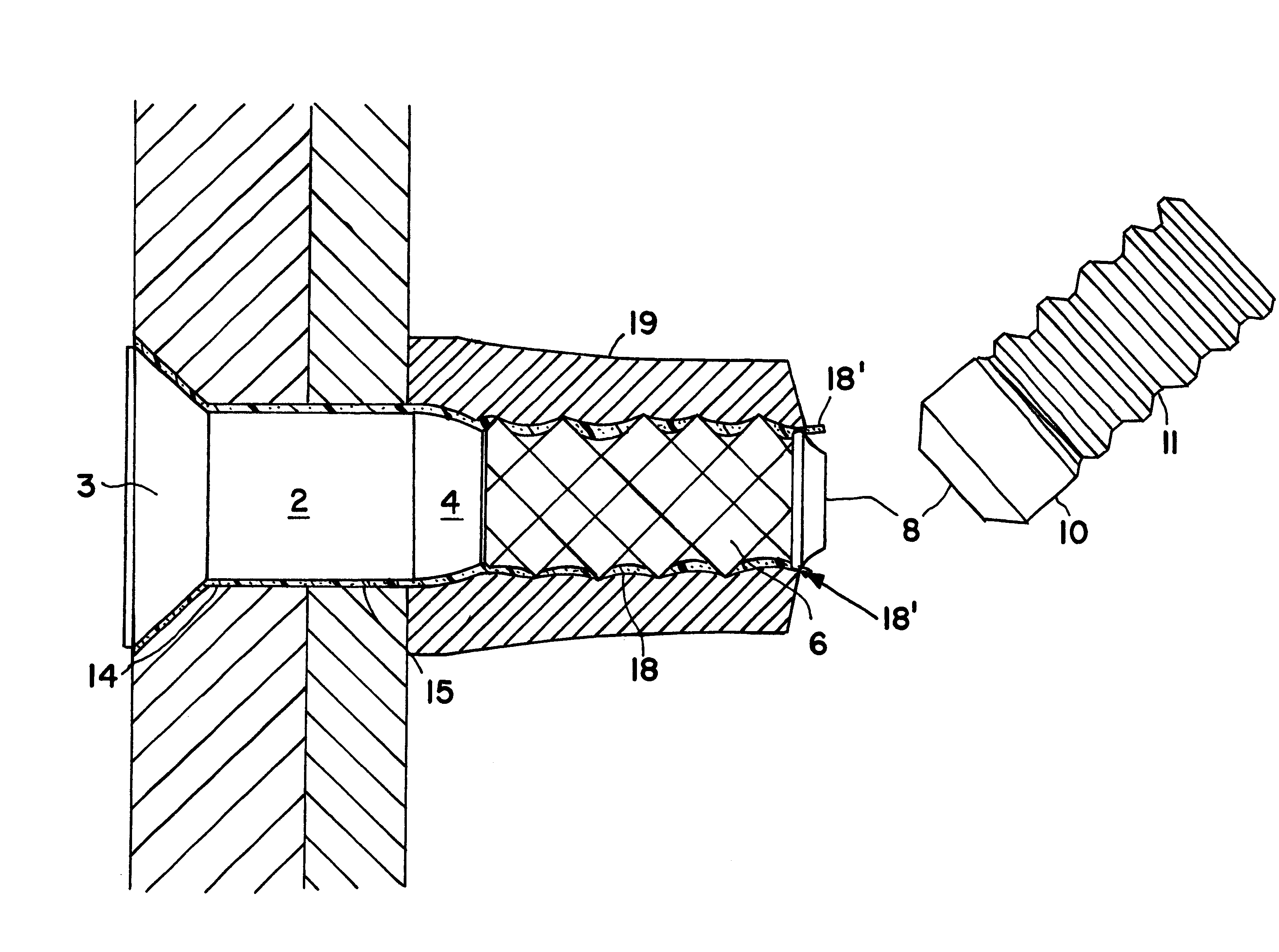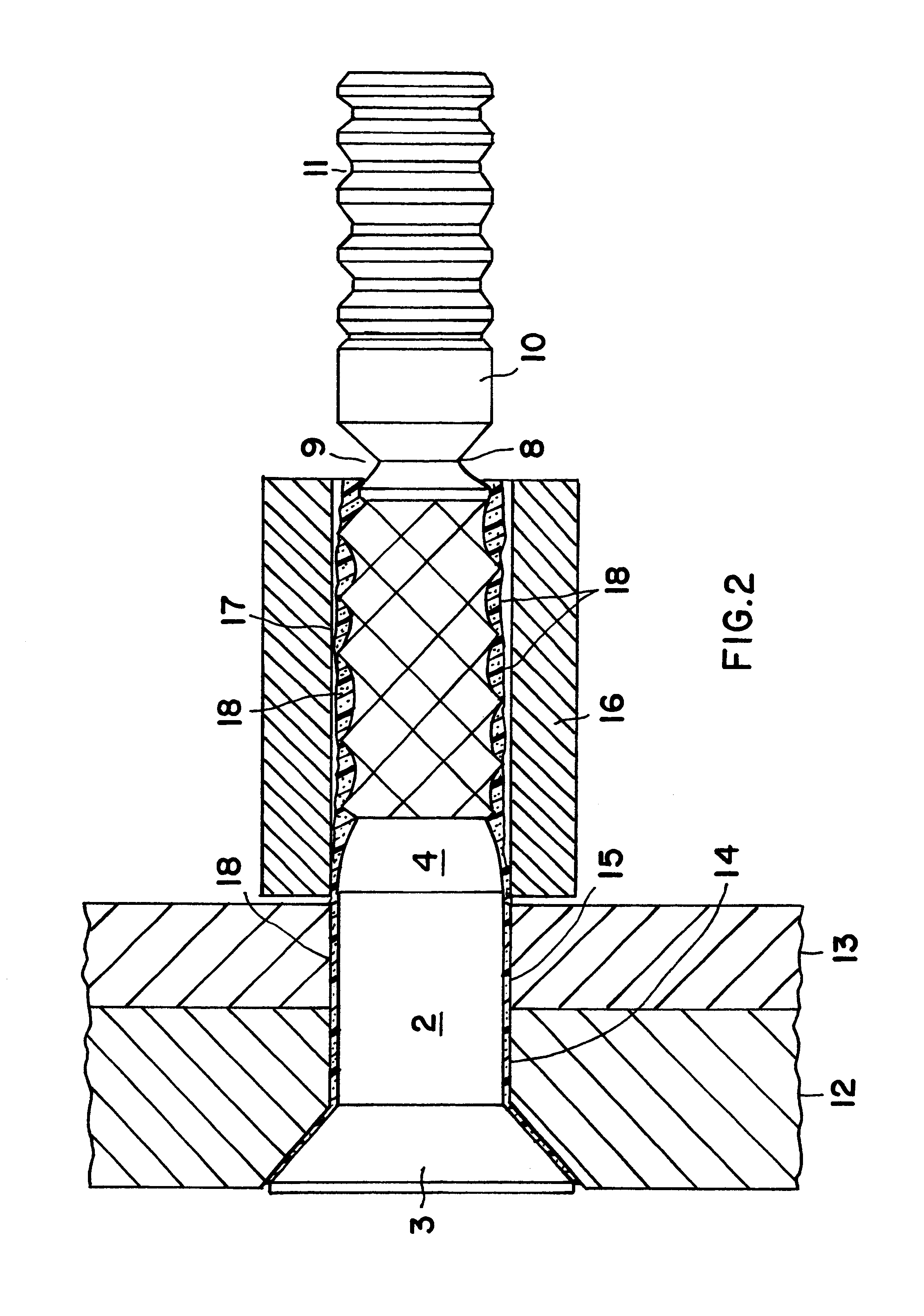Lockbolt for forming a mechanically secured and sealant sealed connection between components
a technology of mechanical sealing and locking collars, which is applied in the direction of bolts, threaded fasteners, screws, etc., can solve the problems of contaminating the sealant still reaches and contaminates the annular circumferential groove, and the proper function of mechanical sealing connections cannot be reliably and completely guaranteed
- Summary
- Abstract
- Description
- Claims
- Application Information
AI Technical Summary
Benefits of technology
Problems solved by technology
Method used
Image
Examples
Embodiment Construction
As shown in FIG. 1, a lockbolt 1 includes a flat countersunk head 3 mechanically rigidly connected to one end of a generally cylindrical shaft 20. Instead of the countersunk head 3, the lockbolt may have any other conventionally known head configuration, such as a cylindrical head, a pan head, a round head, or the like. Adjoining the bolt head 3, the shaft 20 includes a cylindrical shank 2, which transitions through a preferably conically tapering portion 4 into a profiled or surface-patterned locking portion 5. The surface profiling of this locking portion 5 comprises a knurling 6 therearound, made up of knurling peaks 7B bounded by knurling flanks 7, between respective adjacent knurling grooves 7A. In this embodiment, the knurling peaks 7B are essentially diamond-shaped, i.e. having a pyramid shape with a four-sided diamond-shaped base, and the knurling grooves 7A include two sets of grooves respectively extending in opposite spiral directions helically around the surface of the b...
PUM
| Property | Measurement | Unit |
|---|---|---|
| mechanical engagement | aaaaa | aaaaa |
| shape | aaaaa | aaaaa |
| pyramid shape | aaaaa | aaaaa |
Abstract
Description
Claims
Application Information
 Login to View More
Login to View More - R&D
- Intellectual Property
- Life Sciences
- Materials
- Tech Scout
- Unparalleled Data Quality
- Higher Quality Content
- 60% Fewer Hallucinations
Browse by: Latest US Patents, China's latest patents, Technical Efficacy Thesaurus, Application Domain, Technology Topic, Popular Technical Reports.
© 2025 PatSnap. All rights reserved.Legal|Privacy policy|Modern Slavery Act Transparency Statement|Sitemap|About US| Contact US: help@patsnap.com



